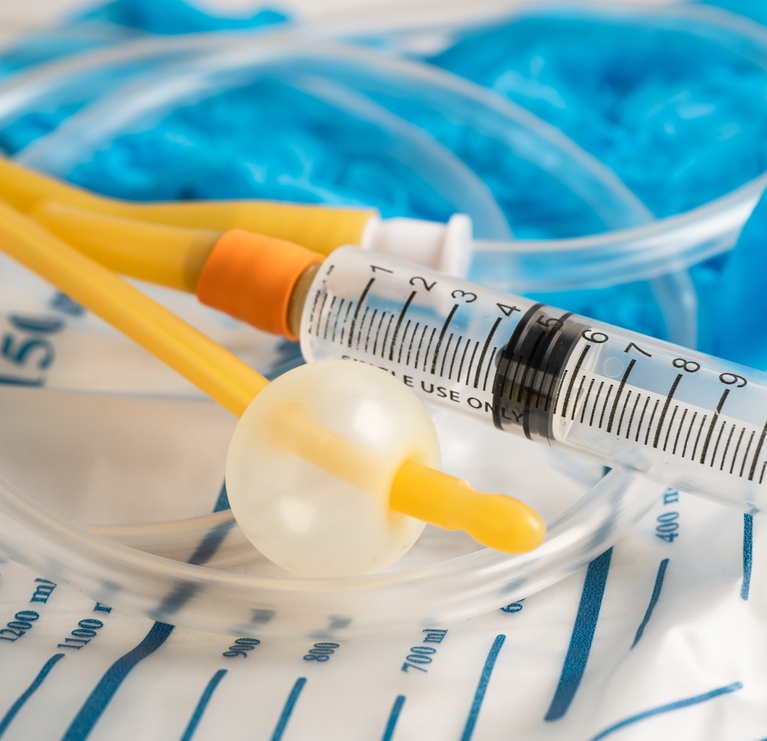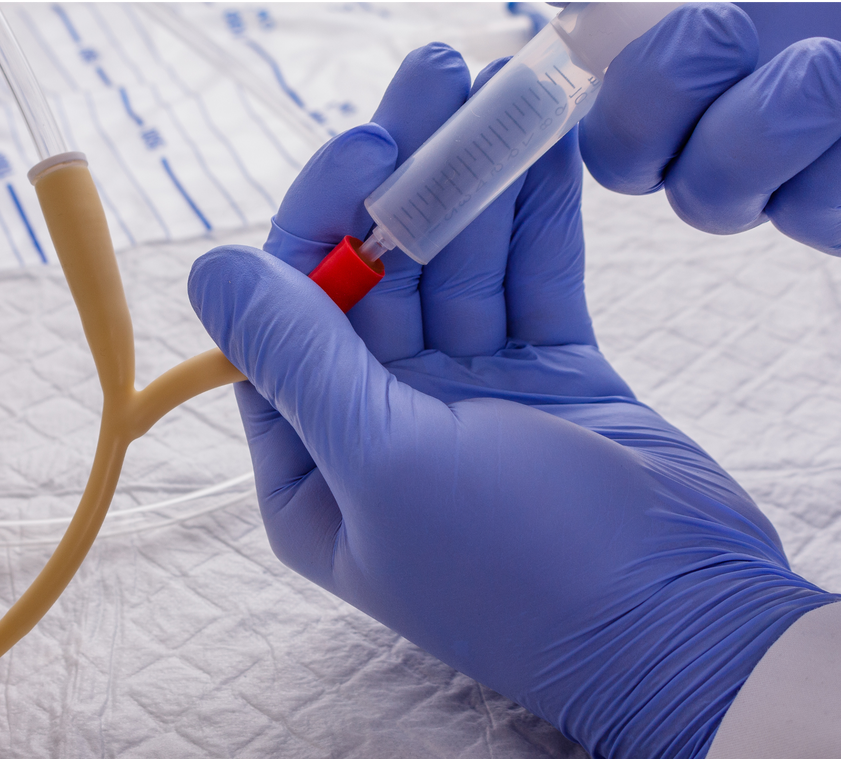Get in touch
Email: info@empoweringabilityjourney.com.au
Phone: 0451 093 210 or 1300 045 841
How to Keep It Safe, Comfortable, and Hygienic
Your Guide to Safe Catheter Care at Home
Suprapubic Catheter (SPC)
A suprapubic catheter is a type of urinary catheter that is surgically inserted into the body below the belly button, directly into the bladder.
This placement in the lower abdominal area provides an alternative for those unable to use an IDC. Urine drains into a bag similar to the one used with an IDC, making sure convenience and cleanliness.
Suprapubic catheters are also replaced every 4 to 12 weeks, following medical guidance. This option is particularly useful for individuals requiring long-term catheterisation while reducing urethral discomfort.

Kawala's Advice on Hydration
Drinking plenty of water helps keep your urinary system healthy and reduces the risk of infections. Aim for at least 8 glasses a day, unless advised otherwise.
Kawala's Advice on Hydration
Drinking plenty of water helps keep your urinary system healthy and reduces the risk of infections. Aim for at least 8 glasses a day, unless advised otherwise.
Uridome
A uridome is a non-invasive, condom-like device that fits directly over the penis to collect urine. It is commonly used by male participants as an alternative to catheters inserted into the body.
At night, the uridome is connected to a drainage bag, allowing for uninterrupted rest while managing urinary output. This option is less invasive and can be more comfortable for some individuals.
Proper placement and attachment are essential to make sure effective use and prevent leaks.
Intermittent Catheterisation
Intermittent catheterisation involves the insertion and removal of a catheter several times a day to empty the bladder.
This method is often preferred for individuals who can manage short-term catheterisation or have specific medical needs.
The procedure must be carried out by a registered nurse or trained caregiver, following strict medical protocols. This approach minimises the risk of infections while making sure the bladder is emptied effectively.
It requires careful scheduling and monitoring to meet the individual’s needs.

What Are Catheters, and Who Needs Them?
A urinary catheter is a hollow, flexible tube that collects urine from the bladder and drains it into a bag. The indwelling catheter (IDC) is inserted through the urethral opening of the penis or vulva and held in place by a small balloon inflated with water.
This type of catheter is commonly used for individuals who need help managing urinary output due to health issues. It is changed every 4 to 12 weeks to maintain hygiene and prevent infections.
A drainage bag attached to the catheter collects urine efficiently, allowing for proper waste management.
How to Keep Catheters Safe and Clean
Infection control is crucial when managing urinary catheters to protect both the participant and the caregiver. Perform thorough hand hygiene before and after handling the catheter or associated equipment.
Use personal protective equipment (PPE), such as gloves and aprons, to reduce contamination risks. Replace catheter bags using sterile techniques, and dispose of used bags following infection control guidelines.
Consistent adherence to these protocols helps prevent infections and makes sure of safe care.
Monitoring and Documentation
Proper monitoring and documentation are key to effective catheter management. Record all aspects of care, including the catheter’s position, any incidents, and changes in the participant’s condition.
Regularly inspect the insertion site for redness, swelling, or signs of infection, and document findings accurately. Make sure the catheter remains securely positioned to prevent discomfort or complications.
Detailed records provide a clear history of care and support ongoing health assessments.
Kawala's Tip for Catheter Care
Keeping the area around your catheter clean and dry prevents irritation.
Gently wash with soap and water daily, and always wash your hands before and after handling the catheter
Nha's Tip for Catheter Care
Keeping the area around your catheter clean and dry prevents irritation.
Gently wash with soap and water daily, and always wash your hands before and after handling the catheter
Catheter Care Procedures
Daily cleaning of the catheter entry site is vital to maintain hygiene and prevent infections. Use downward strokes to clean the area and make sure the tubing is securely fastened to prevent pulling or tugging.
Leg bags should be secured under clothing with straps above the knee and emptied when half full to avoid overfilling.
Overnight bags must be properly connected to leg bags for efficient drainage and cleaned thoroughly after use. Following these steps helps maintain comfort and reduce the risk of complications.
The Most Common Catheter Complications and How to Avoid Them
Catheter-related complications can include urinary tract infections (UTIs), allergic reactions, and urethral injuries. Other potential issues are bladder stones, kidney damage, or general infections.
Symptoms such as cloudy or bloody urine, unusual odours, fever, or redness around the catheter site should be reported immediately.
Persistent abdominal pain or changes in mental state can also indicate serious issues.
Address blockages caused by sediment, blood, or kinks in the tube promptly by consulting a registered nurse or healthcare practitioner.

Equipment Needed for Catheter Care
Having the right equipment readily available is essential for proper catheter care. Items such as disposable gloves, aprons, goggles, lubricants, catheters, and urine bags should be stocked at home.
Leg straps, waste bags, and other accessories make sure the process remains hygienic and efficient. Properly managing these supplies reduces risks and supports effective care.
Need Support With Catheter Care?
If you have questions or need assistance, contact your healthcare provider for personalised guidance.
Professional help is just a call away to make sure the best care possible.
Send Us a Message
Contact Us
We will get back to you as soon as possible.
Please try again later.
Loved and recommended by Athletic Koala NDIS Website Team

